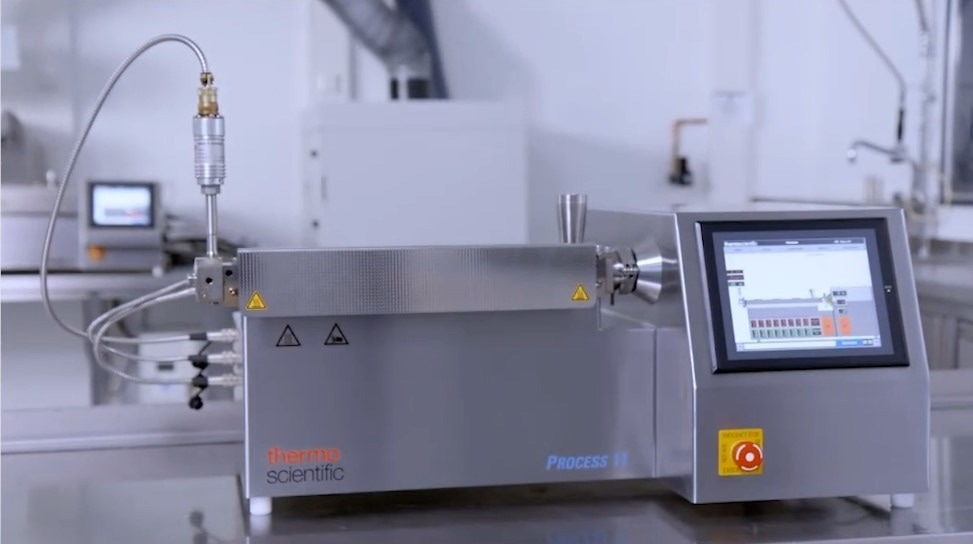In this interview, NewsMedical speaks with Joanna Lipner, Co-Founder of PIKRALIDA, and Hanna Kierońska, Head of Drug Technology, about the company’s approach to reducing polypharmacy, drug formulation via hot melt extrusion (HME), and the development of novel neuroprotective and orphan disease therapies.
Can you please introduce PIKRALIDA?
We are a company operating under a hybrid business model. On one hand, we focus on developing innovative therapies for unmet medical needs, and on the other, we offer professional contract research organization (CRO) services to biotech and pharmaceutical companies. Our development efforts center around a highly potent inhibitor of matrix metalloproteinases (MMPs) and snake venom metalloproteinases (SVMPs), which we are advancing this into therapies for conditions such as post-stroke neuroprotection and snakebite envenoming.
We’re focused on two major therapeutic avenues. First, we are developing a novel neuroprotective therapy for post-stroke patients, a space that still lacks effective long-term treatments. Secondly, we are targeting an orphan disease: snakebite envenoming. It’s a neglected condition in urgent need of attention, and we believe our molecule has strong potential here due to its mechanism of action.
How are you utilizing Thermo Fisher’s twin screw extruder in your research?
The twin screw extruder plays a critical role in our work, especially for hot melt extrusion. This technology significantly enhances the solubility of our active pharmaceutical ingredients (APIs), which is crucial for improving drug absorption and efficacy. It also allows us to develop fixed-dose combination therapies by embedding different APIs into a thermoplastic polymer to ensure compatibility and enable controlled release.

Image Credit: Thermo Fisher Scientific
How does this help to reduce polypharmacy?
Hot melt extrusion enables us to formulate complex drug combinations into a single dosage form. This is particularly important for elderly patients or those with chronic conditions who often take multiple medications.
By combining therapies into one product and modifying the release profiles appropriately, we can reduce the number of different pills a patient needs, effectively addressing polypharmacy. It’s a patient-centered innovation that enhances adherence and minimizes potential drug interactions.
Why is a laboratory-scale extruder particularly suitable for your research and development?
We often work with rare or costly APIs, so we need to keep batch sizes small. A laboratory-scale extruder is ideal for minimizing API consumption while enabling efficient process development. It’s also compact, which is practical for R&D labs that tend to have limited space. Most importantly, it mirrors the design of pilot and production-scale extruders, making the transition to larger-scale manufacturing straightforward and low-risk.
How important is scalability when moving from the lab to commercial production?
It’s crucial. The beauty of Thermo Fisher’s twin screw extruders is that their lab models are designed to closely resemble production-scale equipment. This consistency allows for seamless technology transfer. We can develop a process on a small scale and be confident it will perform similarly at manufacturing scale, which reduces development time and risk.

Image Credit: studiovin/Shutterstock.com
Are there other processing methods you're exploring with the twin screw extruder?
Yes, the versatility of the twin screw extruder extends beyond hot melt extrusion. We're also looking into methods like continuous wet granulation, pelletization, and even producing filaments for 3D printing. These options provide flexibility in dosage form development, allowing us to tailor drug delivery to specific therapeutic needs and patient groups.
How do you see your technologies impacting the future of drug development?
I believe combining smart drug formulation technologies with precision manufacturing tools like twin screw extrusion will transform how we develop and deliver medicines. For example, the ability to reduce polypharmacy not only simplifies therapy for patients but also improves safety and outcomes.
As we explore more personalized and complex treatments, especially in orphan diseases and CNS disorders, these technologies will be indispensable.
What’s next for PIKRALIDA?
We are moving forward with our lead candidates in both the neuroprotective and snakebite envenoming areas. At the same time, we continue supporting biotech partners through our CRO services. We’re also expanding our formulation development capabilities, which will enable us to develop even more innovative dosage forms in the future.